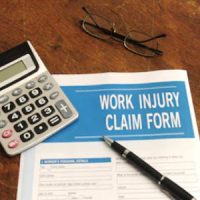Signs Your Vermont Workers Compensation Claim May Be of High Value

Every year, Vermont records thousands of workplace injuries and illnesses that result in hospitalization and time off from work. According to the U.S. Bureau of Labor Statistics (BLS), in 2020, private industry employers reported 6,900 nonfatal occupational injuries and illnesses in Vermont. After suffering a work-related injury or illness in Vermont, employees can file a workers’ compensation claim and seek financial relief. In Vermont, all employers must carry workers’ compensation insurance if they have at least one employee (part-time, full-time, or seasonal). Every workers’ compensation claim aims to cover medical expenses and lost wages. However, some workers’ compensation cases may involve higher payouts than others. It is crucial to understand the factors that result in a workers’ compensation claim being of high value. That way, you can ensure you recover the compensation you deserve. Below are some key signs that your Vermont workers’ compensation claim may be of high value.
The Injury Suffered Is Severe or Catastrophic
The nature and extent of your injury play a vital role in determining the value of your Vermont workers’ compensation claim. Generally, the more severe your injuries, the higher the value of your claim. Examples of severe or catastrophic injuries include brain injuries, spinal cord injuries, cancer cases, and amputations or loss of a limb. Severe and catastrophic injuries often require extensive medical treatment and long-term rehabilitation and may cause permanent disability. Often, these injuries have a significant and lasting impact on a worker’s ability to work. Claims involving such injuries often involve higher compensation to account for the extensive medical costs, rehabilitation expenses, lost wages, and any resulting disability.
High Medical Expenses
A significant component of any workers’ compensation claim is the cost of medical treatment. This includes hospitalization, doctor visits, medication, surgeries, physical therapy, and ongoing treatment. Your claim’s value may be high if your injury requires extensive or specialized medical care. For instance, if you need future surgeries or ongoing physical therapy, your claim will be typically valued high.
Extensive Time Away From Work
If your workplace injury has you spending significant time away from work, you may have a high-value workers’ compensation claim. A prolonged recovery time usually means you will receive temporary disability benefits for an extended period, which can increase the overall payout. In Vermont, temporary total disability (TTD) benefits are calculated as two-thirds of a worker’s average gross weekly income (before taxes) or Average Weekly Wage (AWW). If, for example, you are out of work for several months, your TTD benefits can add up significantly.
Loss of Future Earnings
A work injury can prevent you from returning to your previous job. If your work injury prevents you from returning to your previous job or reduces your ability to earn at the same level, you may be entitled to additional benefits. In Vermont, if you suffer a lasting impairment that diminishes your earning ability, you can recover permanent partial disability (PPD) benefits. On the other hand, if you cannot return to any form of gainful employment due to your work injury, you can recover permanent total disability (PTD) benefits.
Contact Us for Legal Help
Our Vermont workers’ compensation lawyer at Sluka Law Firm can help you negotiate a fair settlement with your employer’s insurer or take your case to trial, whichever is in your best interests. Contact us today to schedule a consultation and discuss your case.
Source:
bls.gov/regions/northeast/news-release/workplaceinjuriesandillnesses_vermont.htm#:~:text=Private%20industry%20employers%20reported%206%2C900%20nonfatal%20workplace%20injuries%20and%20illnesses%20in%20Vermont%20in%202020%2C%20resulting%20in%20an%20incidence%20rate%20of%203.6%20cases%20per%20100%20full%2Dtime%20equivalent%20workers%2C%2
